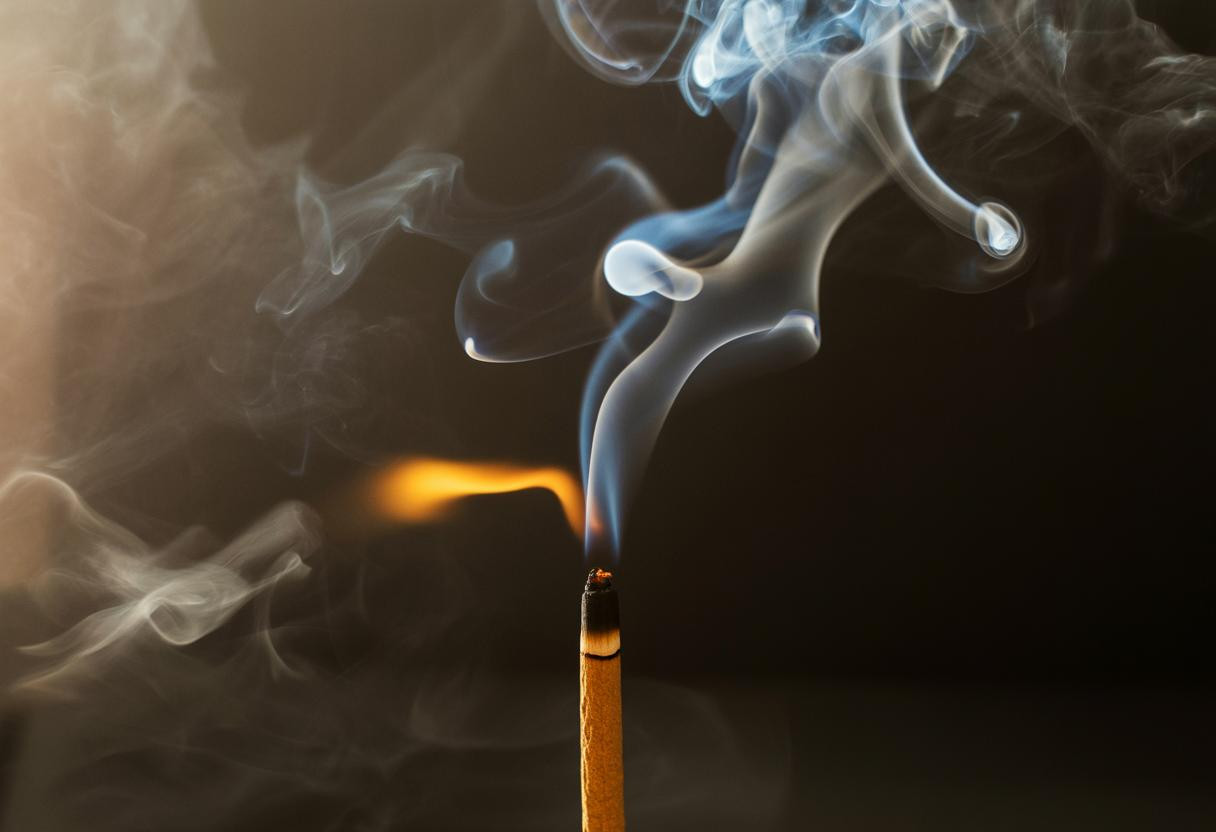What begins as a peaceful ritual for millions worldwide might be silently triggering dangerous inflammation in your lungs, with particulate matter concentrations exceeding cigarette smoke and toxic compounds penetrating deep into respiratory tissue. Recent research reveals that incense burning releases ultrafine particles and volatile organic compounds that can cause cellular damage similar to environmental pollution, yet most people remain unaware of these hidden health risks.
The ancient practice meets modern health concerns
For thousands of years, incense has held sacred significance across cultures, from Arabian spiritual ceremonies to Asian meditation practices. However, modern scientific analysis has uncovered alarming evidence about its impact on lung health.
Studies show incense smoke requires 45 mg of particulate matter per gram burned compared to just 10 mg for cigarettes. In UAE households, researchers found incense smoke concentrations exceeding WHO air quality guidelines by ten-fold, creating indoor pollution levels that rival major city smog.
What makes this particularly concerning is how these toxic exposures mirror gas stove health risks and benzene exposure, where household activities release similar dangerous compounds like benzene and formaldehyde into living spaces.
How incense smoke attacks your respiratory system
Molecular invasion through ultrafine particles
When you light incense, it releases PM₁ and PM₂.₅ particles that are small enough to penetrate directly into lung tissue. These microscopic invaders trigger cellular receptors called TLR4 and NLRP3 inflammasomes, launching an inflammatory cascade that releases harmful cytokines like IL-6 and TNF-α.
The primary culprit is toluene, measured at concentrations of 70.8±35.7 µg per gram of incense burned. This volatile organic compound acts as a tracer that scientists use to identify incense exposure in blood and tissue samples.
Oxidative stress overwhelms cellular defenses
Alveolar macrophages – your lung’s cleanup crew – become overwhelmed trying to process these foreign particles. They release reactive oxygen species that damage DNA and disrupt mitochondrial function, creating a cycle of chronic inflammation that persists long after the incense burns out.
This oxidative damage activates NF-κB pathways, sustaining inflammation even when exposure stops. The process mirrors how environmental toxins affect vulnerable populations, similar to concerns about water quality concerns for seniors who face multiple environmental health challenges.
Hidden cardiovascular and neurological consequences
Beyond respiratory damage, incense smoke creates systemic inflammation that affects your entire body. Daily exposure for over 40 years increases risks of chronic limb-threatening ischemia, while inflammatory particles deposit in cardiac tissue, promoting atherosclerosis and irregular heart rhythms.
Perhaps most surprising, recent studies link chronic incense exposure to cognitive decline in adults over 65, with reduced prefrontal cortex volume and decreased brain connectivity. This neurological impact adds to the cumulative burden that older adults face from various household exposures, including kitchen-related cancer risks for older adults.
Protecting yourself while honoring traditions
Immediate harm reduction strategies
Switch to electric incense devices that use heat diffusion instead of combustion. One case study showed an asthmatic patient’s symptoms improved dramatically after making this simple change.
Ensure proper ventilation by opening windows during and after burning incense. This single action can reduce PM₂.₅ concentrations significantly in your living space.
Alternative approaches for wellness
Consider essential oil diffusers or reed diffusers that provide aromatic benefits without particulate matter. Some people find that natural alternatives for mental wellness like spending time outdoors can provide similar psychological benefits without indoor air pollution risks.
For those with pre-existing conditions, antioxidant supplements like NAC or vitamin C may help neutralize reactive oxygen species, though this shouldn’t replace exposure reduction.
The path forward requires awareness and action
The intersection of cultural tradition and health science demands thoughtful solutions that respect both heritage and wellbeing. Understanding these risks empowers you to make informed choices about incense use while finding ways to maintain spiritual and cultural practices safely. Your lungs will thank you for prioritizing both tradition and health.
